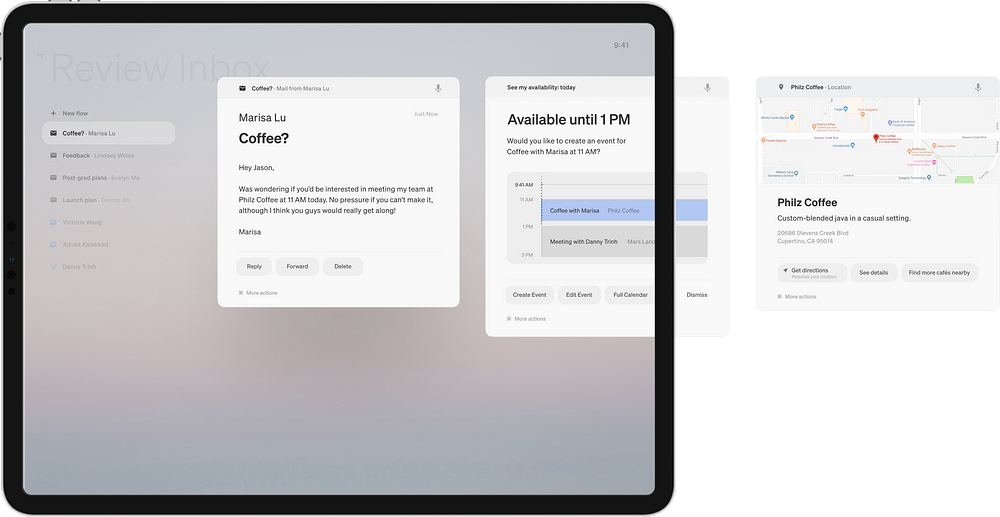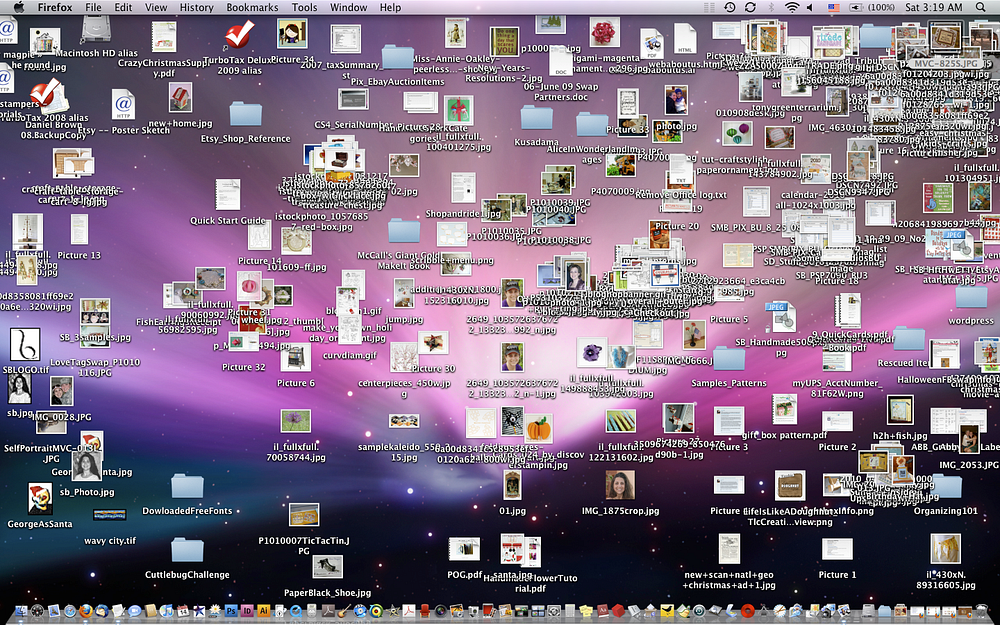Are we ready to abandon the desktop metaphor?
I say yes. Here’s why.
I recently did a lot of research about the computer desktop, a metaphor that all current operative systems have in common and that is going on for almost 50 years now (!!!), since the Xerox Alto that first to introduce a graphical user interface.
Offices were very different 50 years ago. Files were, for the most part, actual pieces of paper, the work was carried on on the physical surface of a desk and people were digitally illiterate, so the desktop metaphor came to help smooth the transition from the physical world of the office to its digital counterpart. Even though the graphic capabilities of computers and screens weren’t enough to actually mimic the realistic look and feel of paper, folders and so on, the desktop metaphor is to all intents an example of skeuomorphism.
Even the screen ratio was vertical, resembling a standard sheet of office paper


Today things are very different, we are all digitally savvy enough to take off the training wheels of the desktop and explore more efficient paradigms for our computer systems.
Jef Raskin, the father of the Apple Macintosh, in the year 2000 wrote the book “The humane interface” where he theorized how the desktop metaphor was a legacy of a past that didn’t make much sense anymore. And this was 20 years ago!
Raskin also introduced the idea of getting rid of file names and the usual tree-structure for organizing them.
Inspired by Raskin’s words, designer Jason Yuan created Mercury OS, a speculative vision for a new operating system that completely ditched the desktop metaphor as well as many other consolidated paradigms of today’s computers.
I love the effort of exploring solutions that go beyond what we are used to and I think Yuan’s final result with this project is pretty amazing. But, to be honest, I also believe this might be too big of a leap from the current situation.

We already abandoned the desktop
Even though thinking of not having a desktop might seem hard to imagine for most of us, we already did it on devices that we use even more frequently than our computers.
Smartphones and tablets never used the desktop metaphor (yes, some Android tablets offer an alternative “desktop mode”, in a poor attempt of shifting the tablet toward a more PC-like experience). At the same time, a few releases back, MacOS introduced the Launchpad feature, which is a clear derivation from the tablet’s world.
We can even go further and explore other devices running an OS that doesn’t use a desktop, like gaming consoles. On gaming consoles, you run apps (games and more), you manage media files (videos and screen-captures), you watch streaming services and more and the paradigm used for their home screen very far from the desktop metaphor.

Files are in the cloud
While until a few years ago most of our files were stored locally, in more recent times we started using cloud services and web apps more and more. Our Google Docs documents are not files on our hard-drive, for example, but not just that, nowadays almost any software offers cloud storing of files, and we perhaps even should stop referring to them as “files”, but “projects”, think of Figma or Invision for instance.
With this way of working having a desktop doesn’t offer much of a convenience.
What we use the desktop for?
For most people, the desktop is just a dump. It’s a place where they place files that are supposed to be temporary and instead lie there for months, in a cemetery of good intentions.
Most of them are such a mess that Apple introduced the “stacks” features, in an attempt to help users keeping their desktop somewhat clean. I suspect that using stacks is like hiding the dust under the carpet, the desktop appears cleaner and you are encouraged to dump even more files there.
There’s not much use for a desktop other than this.

What’s the alternative?
Instead of a desktop, we could have a more efficient and helpful home screen, we could take advantage of AI to understand the context of use and suggest functionalities based on location, time of the day and user habits.
We could have easier access to the apps and projects we need at any given moment, for example. Or control over our ecosystem of devices and management of communications and notifications. The job of temporary files repository could be done by a more advanced and self-purging clipboard, callable from a dedicated key and appearing over any screen for an easy and convenient drag-n-drop.
Maybe we don’t need a home screen at all. Imagine how the internet works. You most probably have a search engine as your browser home and from there you either make a search or goes directly to the place you’re interested in. When you open the browser again you’re back to where you were, and you can jump from place to place without necessarily go through the home screen again.
It’s like many of us already do when using MacOS’s Spotlight function.
It’s not easy to imagine a computer without a desktop, but at this point, it’s more a matter of habit than real convenience.
⬜️⬜️⬜️⬜️⬜️⬜️⬜ 👧🏻👧🏼🧒🏻👦🏼👧🏾👦🏿👧🏽👧🏻👧🏼🧒🏻👦🏼👧🏾👦🏿👧🏽👧🏻👧🏼 ⬜️⬜️⬜️⬜️⬜⬜️⬜
My new book “Designing Digital Products for Kids”! Out December the 4th!
Learn the secrets to design successful digital products for children.
You’ll find answers to all your questions regarding the industry, and its peculiarities in 📐 UX design, 🎨 UI design, 🔍 user testing, 📈 business strategies, and much more.
⬜️⬜️⬜️⬜️⬜️⬜️⬜ 👧🏻👧🏼🧒🏻👦🏼👧🏾👦🏿👧🏽👧🏻👧🏼🧒🏻👦🏼👧🏾👦🏿👧🏽👧🏻👧🏼 ⬜️⬜️⬜️⬜️⬜️⬜️⬜



